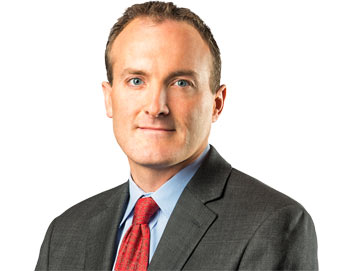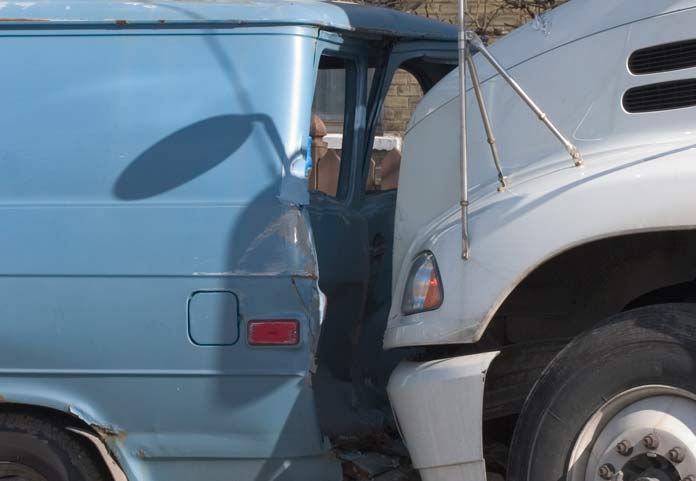Getting rear-ended by a semi-truck is a life-threatening episode. You hear about it in the news media all the time. And while most people these days leap to the conclusion that the truck driver likely was distracted by a cell phone, there’s always the chance the driver was sleeping at the wheel.
After years and years of highway deaths and injuries caused by truckers who nod off in the driver’s seat, excessive drowsiness remains a constant danger in the truck transportation world all around us.
And just when Washington was honing in on much-needed regulation to address one of the underlying factors — sleep apnea in truck drivers — the Trump administration has stepped in to nix the reform. The announcement disappointed truck safety advocates across the country, including personal injury lawyers Fred Pritzker and Eric Hageman, national attorneys who represent semi-truck accident victims and their families.
“Truck driving is a safety sensitive occupation in a grueling industry that deserves more regulation, not less. Screening drivers for troublesome sleep apnea is not too much to ask when you consider the tonnage and velocity truckers command while driving dangerously close to other speeding vehicles.’’
Attorney Fred Pritzker
Under the president’s leadership, two federal transportation agencies recently withdrew a proposed requirement for railroads and trucking companies to test employees for obstructive sleep apnea, known in the business as fatigue-inducing OSA. At one railroad that voluntarily tests its own engineers (Metro-North in the suburbs of New York), 11.6 percent of the operators tested positive for OSA. Untreated sleep apnea can make it difficult for you to stay awake, focus your eyes, and react quickly while driving.
Hageman, who has recovered millions of dollars for families in truck casualty cases, said it’s devastating for victims of semi-truck crashes to see such an important safety campaign fail after years of research and steady progress.
“It’s an outrage for trucking companies to dispatch unfit drivers onto the roads we all share. Lacing our highways with sleep-deprived truckers will be a constant danger.’’
According to the National Highway Traffic Safety Administration, at least 100,000 police-reported crashes are the direct result of driver fatigue each year. Including tractor-trailers hitting cars from behind or side-swiping them, sleepiness results in an estimated 1,550 deaths and 71,000 injuries in the United States. The national highway safety bureau also estimates annual monetary losses of $12.5 billion.
The National Sleep Foundation has devoted an entire web site to the issue of drowsy driving, citing research that indicates commercial drivers who have sleep disorders are at greater risk for fall-asleep crashes. Data are hard to come by in America, because of inconsistencies in the way states track drowsiness as a crash factor. But in Australia, England, Finland, and other European countries where crash reporting is more reliable, drowsy driving contributes to 10 to 30 percent of all crashes, according to the foundation.
Sleep apnea is a respiratory disorder that causes intermittent breathing cessation during sleep. It degrades the quality of a person’s sleep and leaves them impaired and exhausted during the day. When the Federal Motor Carrier Safety Administration (FMCSA) assigned an expert panel to address the problem in truck drivers, the group in 2008 made recommendations that led to the “Sleep Apnea Bill’’ as a new law in 2013. It required FMCSA to complete a formal rulemaking process to set specific standards for drivers, trucking companies and certified medical examiners who sign off on drivers’ medical certificates.
Subsequently, the American Transportation Research Institute’s Research Advisory Committee made it a top priority to investigate potential impacts of the proposed commercial driver sleep apnea rulemaking. But just recently, Trump pulled the plug on the whole effort to reduce industry regulation.
Among officials disappointed by the move are professionals at the nation’s leading transportation safety group — The National Transportation Safety Board. An NTSB spokesman told reporters last month that the agency was disappointed the “much-needed rulemaking’’ was scrapped. The safety board investigates causation in the nation’s worst transportation disasters.
“Obstructive sleep apnea has been in the probable cause of 10 highway and rail accidents investigated by the NTSB in the past 17 years and obstructive sleep apnea is an issue being examined in several, ongoing, NTSB rail and highway investigations,” NTSB spokesman Christopher O’Neil said.
Truck accident lawyers Pritzker and Hageman said they will continue to protest Trump’s position and advocate for a turnaround.
“America needs more screening to disqualify truck drivers and train engineers who have significant, untreated
sleep apnea,’’ Pritzker said. “Too many lives are at stake for us to give up.’’

